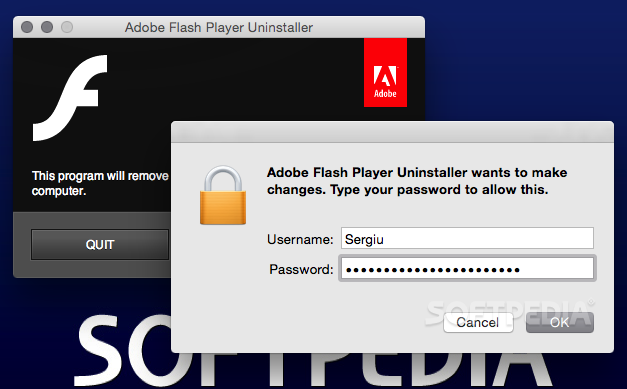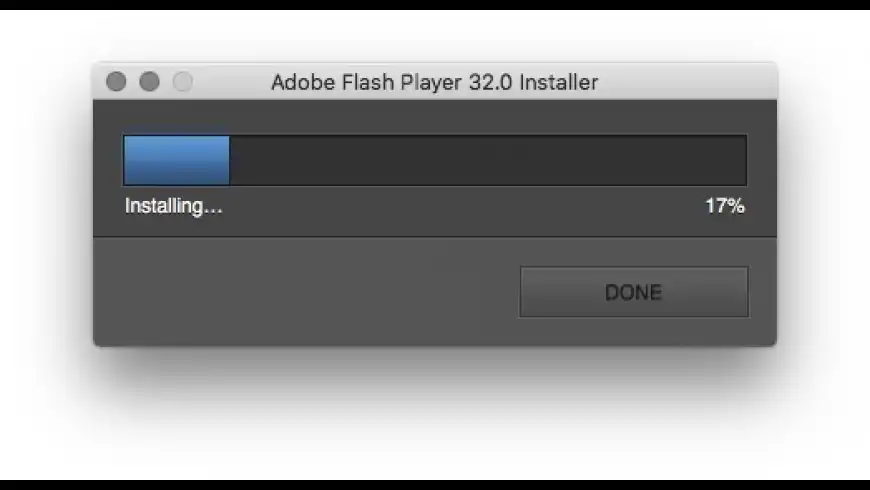- How To Uninstall Adobe Flash Player Mac
- Adobe Flash Player Uninstaller
- Uninstall Adobe Flash Player Mac 10.13.6
- Uninstall Adobe Flash Player Mac Terminal
- Uninstall Adobe Flash Player Mac Popup
- How To Uninstall Adobe Flash
These instructions are NOT applicable to Flash Player included with Google Chrome. Visit the Flash Player Help page for instructions on enabling (or disabling) Flash Player in various browsers.
If you use Windows, see Uninstall Flash Player | Windows.
If your Flash Player installation was not successful, use the following solution to reinstall.
Adobe released the final Flash Player update on December 8. It urged users to uninstall the program as it ends its support for Flash Player on yearend. Uninstalling Adobe Flash Player from Mac OS X 10.1 to 10.3 Follow this systematic guide to proceed with the uninstallation: Launch the Uninstaller you downloaded for your OS Version (authenticate with your Mac version, if need be). Download the Adobe Flash Player uninstaller: Mac OS X, version 10.6 and later: uninstallflashplayerosx.dmg; Mac OS X, version 10.4 and 10.5: uninstallflashplayerosx.dmg; The uninstaller is downloaded to the Downloads folder of your browser by default.
Click the Apple icon and choose About This Mac.
The Mac OS version appears in the About This Mac dialog.
2. Run the uninstaller applicable to your Mac OS version
How To Uninstall Adobe Flash Player Mac
- Run the uninstaller on Mac OS X 10.4 and later, including macOS

Note:
Beginning with Flash Player 11.5, uninstalling the Flash Player resets the AutoUpdateDisable and SilentAutoUpdateEnable settings in mms.cfg to their default values:
- AutoUpdateDisable=0
- SilentAutoUpdateEnable=0
If you are running the Flash Player uninstaller as part of your deployment process, redeploy any custom changes to either AutoUpdateDisable or SilentAutoUpdateEnable.
Run the uninstaller on Mac OS X 10.4 and later, including macOS
Adobe Flash Player Uninstaller
Download the Adobe Flash Player uninstaller:
- Mac OS X, version 10.6 and later: uninstall_flash_player_osx.dmg
- Mac OS X, version 10.4 and 10.5: uninstall_flash_player_osx.dmg
The uninstaller is downloaded to the Downloads folder of your browser by default.
In Safari, choose Window > Downloads.
If you are using Mac OS X 10.7 (Lion), click the Downloads icon displayed on the browser.
To open the uninstaller, double-click it in the Downloads window.
Note: If the Flash Player installer window does not appear, choose Go > Desktop in the Finder. Scroll down to the Devices section and click Uninstall Flash Player.
To run the uninstaller, double-click the Uninstaller icon in the window. If you see a message asking if you want to open the uninstaller file, click Open.
- Bookmark or print this page so that you can use the rest of these instructions after you close your browser.
To close all browsers, either click the browser name in the Uninstaller dialog, or close each browser manually and then click Retry.
Note: Do not click Quit in the Uninstaller window. It stops the uninstallation process.
After you close the browsers, the uninstaller continues automatically until the uninstallation is complete. When you see the message notifying you that the uninstallation succeeded, click Done.
Delete the following directories:
- <home directory>/Library/Preferences/Macromedia/Flash Player
- <home directory>/Library/Caches/Adobe/Flash Player
Download the Adobe Flash Player uninstaller:
- Mac OS X, version 10.3 and earlier: uninstall_flash_player_osx_10.2.dmg (1.3 MB) (updated 05/27/08)
Choose Window > Downloads to view the downloaded uninstaller.
Save the uninstaller file in a convenient location.
To open the uninstaller, double-click it in the Downloads window.
To run the uninstaller, double-click the Uninstaller icon in the window. If requested, enter your computer user name and password and click OK.
Bookmark or print this page so that you can use the rest of these instructions after you close your browser. Close all browsers and other applications that use Flash Player, including instant messaging applications, SWF files, and projectors (EXE files that play SWF files). Otherwise, the uninstaller cannot finish (even though it appears to finish).
Once the uninstaller finishes, the window closes automatically.

You can verify that uninstallation is complete by following these steps:
Open your browser and check the status of Flash Player.
Uninstall Adobe Flash Player Mac 10.13.6
Adobe Flash reached its end-of-life (EOL) on December 31, 2020, and as of January 12, 2021, any remaining Flash Player installations will be blocked from playing content.
Since Adobe Flash is now unsupported, meaning that it will no longer receive security patches — and since won’t be able to play content anyway — you should definitely remove it from your system now if you haven’t done so already. (For more on the background to Adobe’s decision to kill Flash, as well as the security issues involved, see this article).
Here’s how uninstall Flash Player on a Mac:
Uninstall Adobe Flash Player Mac Terminal
- Find your macOS version by going to Apple menu >About this Mac.
- Download the appropriate uninstaller tool for your OS version.
For macOS 10.6 (Snow Leopard) and later, you can use this uninstaller.
If you’re running macOS 10.4 (Tiger) or 10.5 (Leopard), use this uninstaller instead.
For older OSes, see Adobe’s website for detailed instructions. - Locate the .dmg file for the uninstaller in your Downloads folder and double click on it; then double click on the Adobe Flash Player Uninstaller icon that appears in the window.
- When the uninstaller opens, click on the Uninstall button to run the tool.
- If you have any web browsers open, you’ll be prompted to close them in order to complete the uninstall process. You can do this manually, or by using the Force Close option provided by the uninstaller.
If the uninstall was successful, you will see a message telling you that Adobe Flash Player was uninstalled from your system. If you want to double-check, you can go to this page on Adobe’s site and click on the Check Now button to see if Flash is installed on your system; you should see a message telling you that you don’t have Flash.
Uninstall Adobe Flash Player Mac Popup
In the weeks and months ahead, be on the lookout for Adobe-related phishing or social engineering attacks. Flash is obsolete, but bad actors may still try to trick users with fake “updates”, legacy plugin offers, removal tools, and the like. Bottom line? After Adobe Flash is gone from your system, you shouldn’t ever try to install anything Flash-related again.
If you know Mac users who aren’t quite as security-savvy as you are, you may also want to take a moment this week to remind them that Flash has reached EOL. Tell them to uninstall Flash Player from their systems if they haven’t done it yet, and let them know to avoid having anything to do with Flash going forward.
How To Uninstall Adobe Flash
Questions about this process, or about Mac security in general? Feel free to reach out to us and let us know. If you want to learn more about how to configure a Mac for security, check out this article with tips on setting up a new Mac, or read more about Open Firmware Password Protection.
